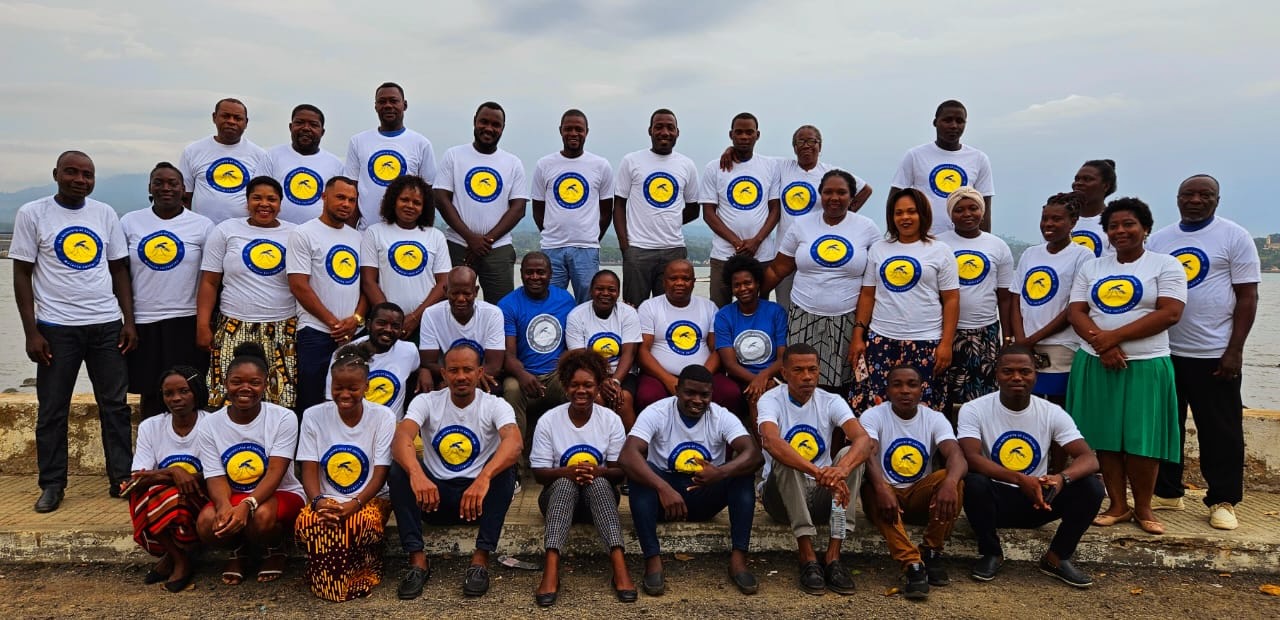Meaningful stakeholder engagement is a cornerstone of our research at the University of California Malaria Initiative (UCMI). It ensures that our approach and our research are aligned with the needs and concerns of communities and stakeholders affected by or involved in our research. In a recently published paper, we share our experience and detail our engagement approach in São Tomé and Príncipe (STP) over the past five years.

UCMI’s engagement team in São Tomé and Príncipe. Photograph: UCMI
At UCMI, we have adopted a relationship-based model (RBM) for engagement around the gene drive technology we are developing to contribute to malaria elimination. Our approach centers on fostering open dialogue, collaboration, and trust with stakeholders and community members. It places them at the core of decision-making, ensuring that their knowledge, practices, and perspectives guide our engagement strategies. In our new paper, we detail this approach and aim to translate the model from theory to practice by providing a transparent description of its implementation.
Early engagement was vital to address key questions such as how and with whom we should engage and what our engagement strategy should look like. Our journey began in 2019 by establishing a collaboration with the Ministry of Health (MoH) in STP. This enabled us to also work with government agencies, NGOs, and international organizations actively involved in the national malaria control and elimination effort, to develop, plan and implement an engagement program led by a local team.

UCMI’s engagement team conducts awareness-raising activities on malaria in São Tomé and Príncipe. Photograph: UCMI
A local engagement team of community health agents, malaria focal points, health delegates, and teachers was then established in 2021 to develop a strategy and manage activities. An initial community assessment provided baseline data on local knowledge, perspectives, and preferences related to malaria and malaria engagement in the country. This assessment informed our initial engagement plan, which focused on malaria education and general program information. The assessment also prompted us to integrate community leaders and health professionals into the engagement program, as they were identified as trusted sources of health information.
Regularly collecting feedback and engaging in dialogue with stakeholders resulted in continuous adjustment and improvement of our stakeholder engagement activities. Following feedback from community health workers and community members, we developed engagement materials including educational booklets, videos, and posters, and launched our social media platforms. Most recently, in response to stakeholder feedback, the team conducted open public debates and discussions related to the program.

UCMI’s engagement team conducts theater plays to engage communities in São Tomé and Príncipe. Photograph: UCMI
Flexibility is one of the strengths of the RBM model, allowing engagement teams and activities to adapt and expand to the needs and concerns of each stakeholder group with each phase of our research. Our engagement aims to ensure transparency, share knowledge, and empower stakeholders and communities to make an informed opinion about our technology. Overall, the RBM model adopted could offer valuable insights for similar projects looking to establish an engagement program model that integrates end-user groups in the decision-making processes surrounding engagement.
Read the full paper here.
